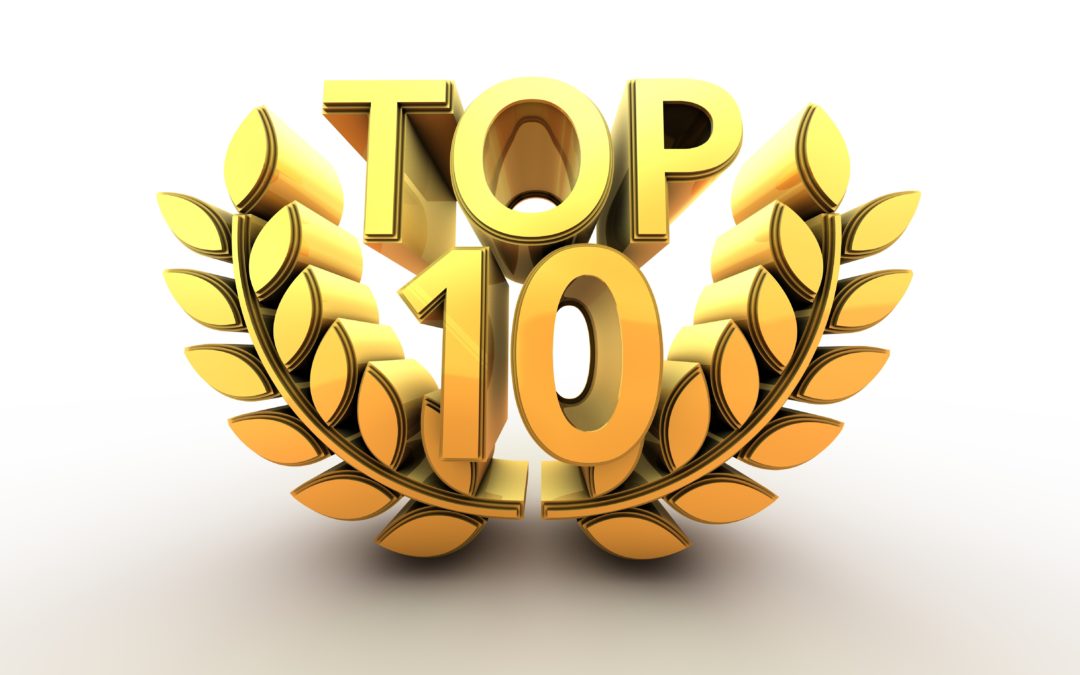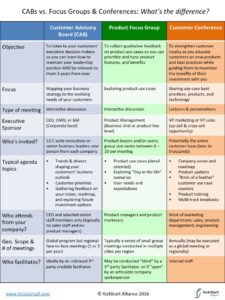For more than 15 years I’ve been helping B2B company leaders design and implement their Customer Advisory Boards. I’ve talked to a lot of executives and customers about what makes a CAB successful. Here are 10 Customer Advisory Board best practices.
1) The CAB is tied to the host company’s annual planning process
Just as annual planning and managing your brand are ingrained into the DNA of your company, so too is the CAB program found in today’s most respected B2B companies. In fact, there is a direct link between the strategic topics discussed at the CAB meetings and the priorities agreed upon at the annual planning meetings. For example, for every future investment opportunity discussed at the CEO’s staff meetings there is a corollary topic or key question asked of CAB members to either validate an industry trend, or challenge the vision, or explore anticipated customer priorities, or dig deeper into business assumptions.
2) The CAB objective drives the agenda
World-class CAB meetings don’t just happen. They require thoughtful planning that begins with a careful understanding of the specific objective for each meeting. One of four specific objectives typically drive each CAB meeting. A cross-functional team discusses their expectations for the upcoming meeting, what they most want to learn, and most importantly, what they plan to do with the information they collect. With a well-formed and agreed upon objective in hand, they then move to define the agenda and requirements for which customers to invite. Nothing is random or left to chance; it all is tied back to the CAB meeting objective.
3) The CAB is treated as a program, not an event
A CAB program is much more than a single meeting. And they are never treated as isolated events. The most effective CAB programs are planned on a global scale, but the meetings are executed regionally. This allows for regional issues, trends, and business drivers to be discussed in a meaningful manner. Western cultural drives the basis for the CAB format and interaction. As such, companies typically plan regional variations of a core agenda for North America (US + Canada), Europe, and Asia Pacific. Other techniques mindful of cultural and language differences are used when seeking input from China and Japan.
4) The CEO is the host
The best-run CABs are corporate initiatives sponsored and hosted by the CEO; it’s one of their most important assets. Having top-level executive endorsement also ensures the organization gets behind the CAB program. While he or she delegates the operations, it is their decree that makes the CAB a powerful force. They believe in engaging a small set of key decision makers in a strategy-level conversation. They believe in listening. They believe in fostering executive relationships. There is no substitute this type of leadership.
5) The CAB is never treated as a product focus group
There is a lot of confusion between CABs and product focus groups and customer conferences. To help sort this out, I’ve created a table to highlight some key differences (click the image to enlarge). The source of this confusion is likely traced back to sloppy semantics. These terms are not meant to be interchangeable. Customers have very different expectations for each. For example: the best run CABs discuss strategic topics that effect your customers’ priorities, investment plans, and vision. They want to know how your company can help them achieve success. These are business-level discussions, not tactical “how to” conversations. Product focus groups, on the other hand, are product-focused, as the name implies. They are run by product managers. A healthy organization will actually run both a CAB program and a series of product focus groups. They are both part of the larger Voice of the Customer strategy or program.
6) It takes 3-6 months to plan each CAB meeting
Companies known for their world-class CAB programs embrace that it takes a minimum of 3 months to plan each meeting. Why so long? First, they know the executives they want to invite are already booked 3 months in advance. They need to give them advanced notice. They also make the time to ensure there is proper internal alignment on the objectives and expectations for the CAB. They are diligent in building a persona as a guide to choosing the best CAB members. They hire a facilitator to interview these CAB members, knowing that an expert facilitator will be able to uncover input and feedback customers are often hesitant about sharing directly with their company. Only then do they dive in to design a relevant and engaging agenda. None of this can happen overnight, and the best companies plan for this.
7) No executive is allowed to “wing it”
The best-run CAB programs never let any executive present free-form (i.e. without any slides and little to no preparation). That is an invitation for rambling. These companies share a belief that if a speaker doesn’t have the time to adequately prepare for his or her discussion, then they aren’t allowed to participate. The fact is that it is easy to cobble together random slides at the last minute. That’s a “speaker’s crutch” where the speaker just reads the slides. Customers don’t appreciate that. It’s harder to carefully think through a discussion topic and then craft only those slides that are critical to the key question they want to explore. Hence, there must always be a few slides to provide enough background for a meaningful discussion. But . . .
8) “Death-by-Powerpoint” is not acceptable
Five slides: that’s the average number used to set up a discussion. For example, an agenda topic may be scheduled for 60 minutes; the speaker spends 10 minutes introducing their hypothesis or presenting some key background information. A “trigger question” is included in the final slide – a question that starts the interactive conversation. That’s when the facilitator steps forward to guide the dialog.
9) They follow the 80/20 rule when it comes to listening
Eighty percent of the time on the agenda is spent with the customers talking and the host company executives quietly listening. Only 20% of the time is allocated to company executives talking. Customers attend CABs because they believe the host company is genuinely interested in seeking their input, advice, and feedback. This can be uncomfortable because you are not exactly sure what you may hear. But executives running the best CABs have practiced their listening skills. They know how to not get defensive. They embrace a “seek to understand” mentality.
10) They use the CAB data to make decisions
Once the meeting is over, the work is only beginning. These companies make time to document the output (usually summarized by the facilitator) and share these reports internally. It is not uncommon for the CAB manager (who reports to the CAB sponsor) to do an internal roadshow to share the output and invite discussion. This input becomes influential in helping teams build stronger business cases and set priorities. Ultimately, they know how to keep the spirit of the CAB alive with business leaders linking their decisions and recommendations back to what they learned at prior CAB meetings. And, at the next CAB meeting, the team can present an update to the customers that prove that they have been listening.
These are only a few of the Customer Advisory Board best practices I’ve collected. For more information, check out my CAB Resource Center or my CAB videos here.
Mike Gospe is a professional CAB facilitator with more than 15 years and 100 CAB meetings under his belt. Mike leads KickStart Alliance’s CAB practice. Contact Mike.


